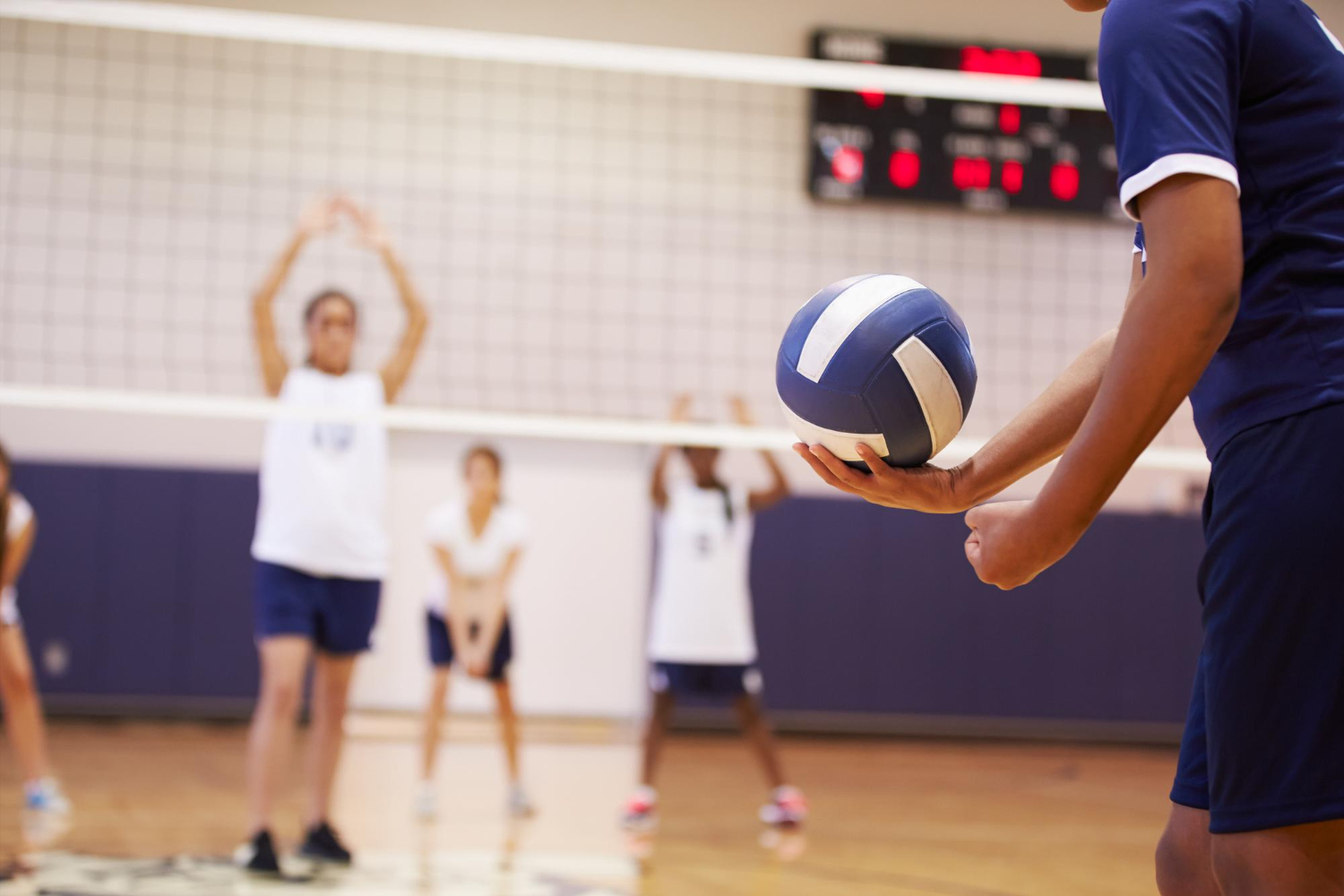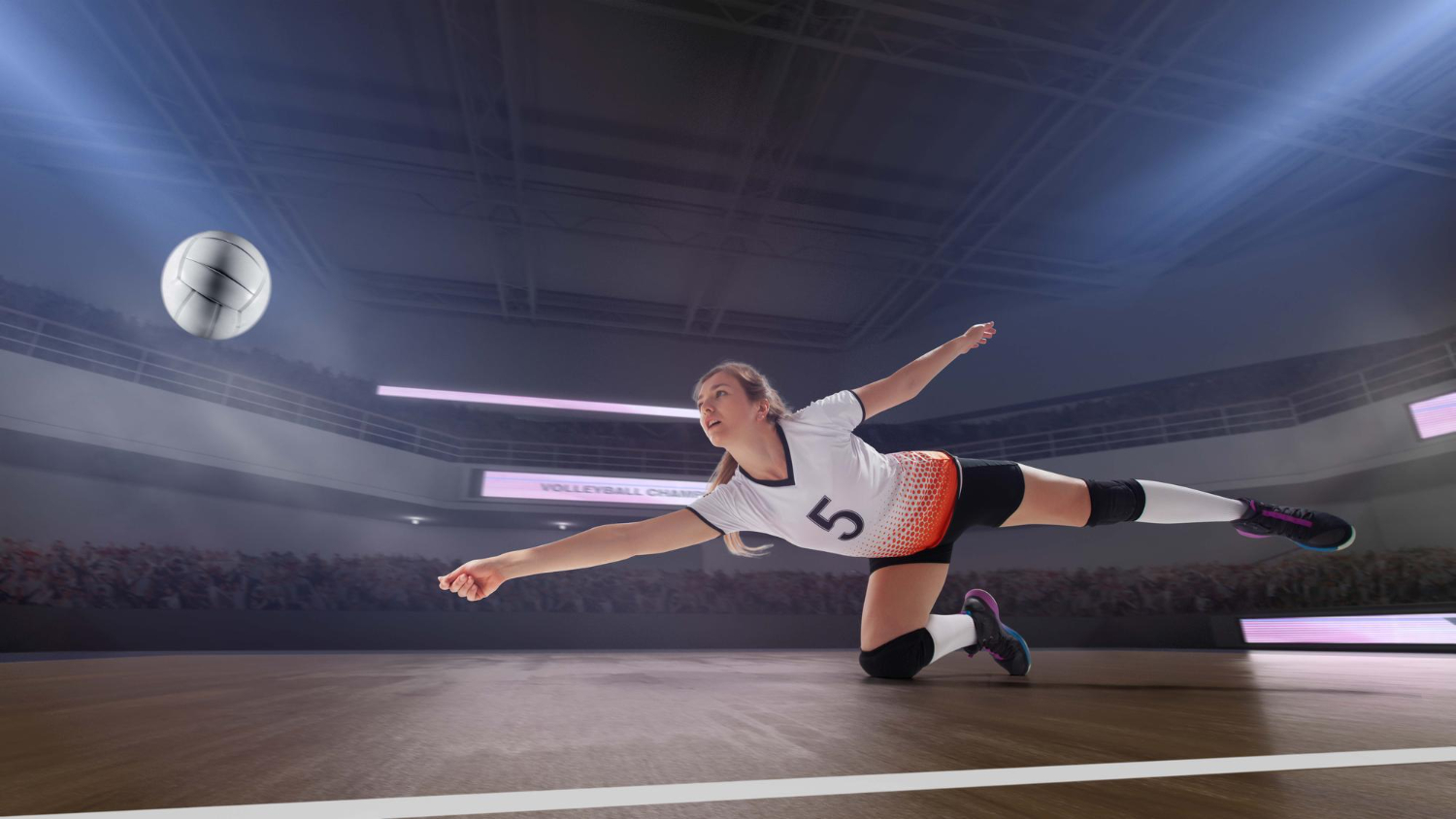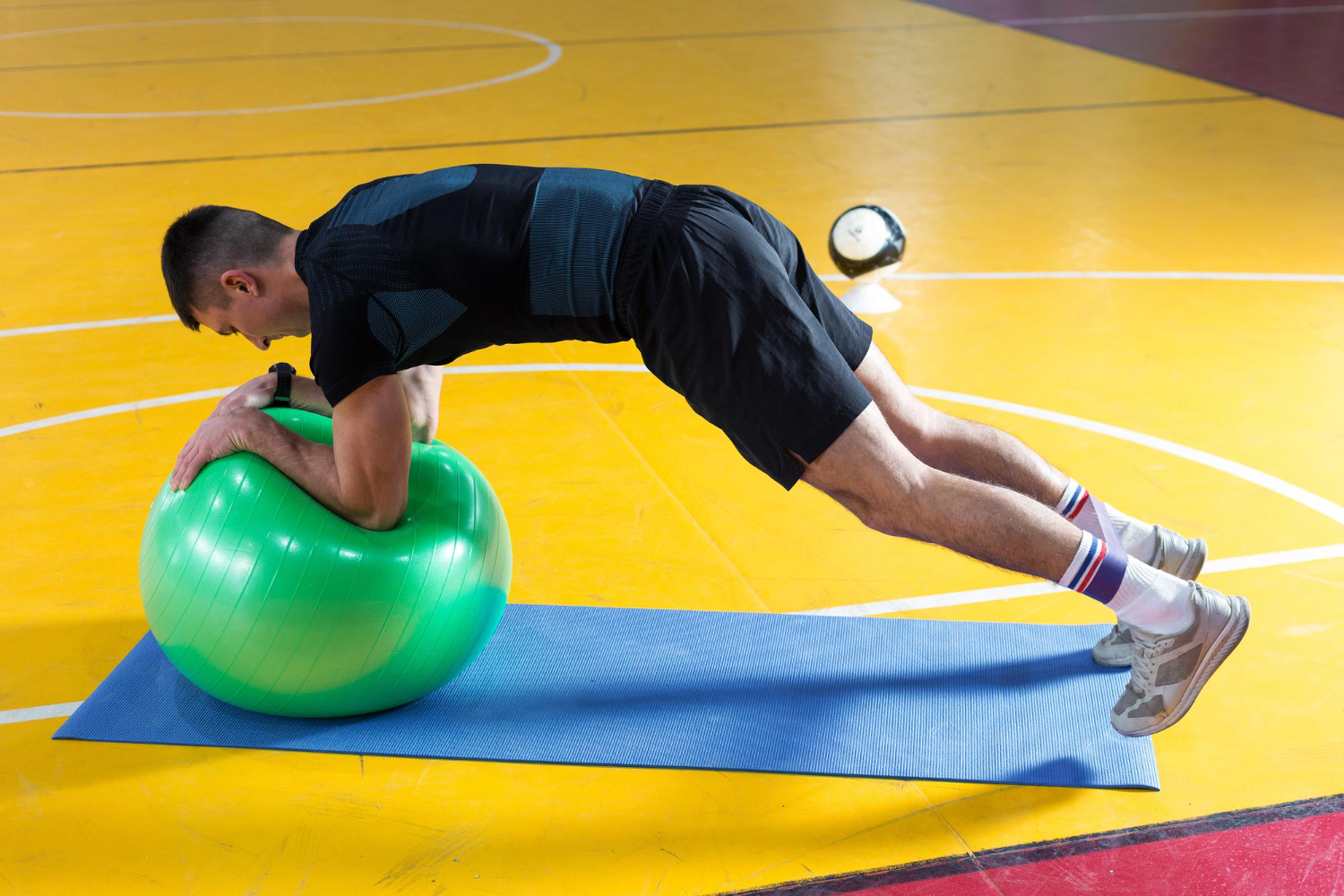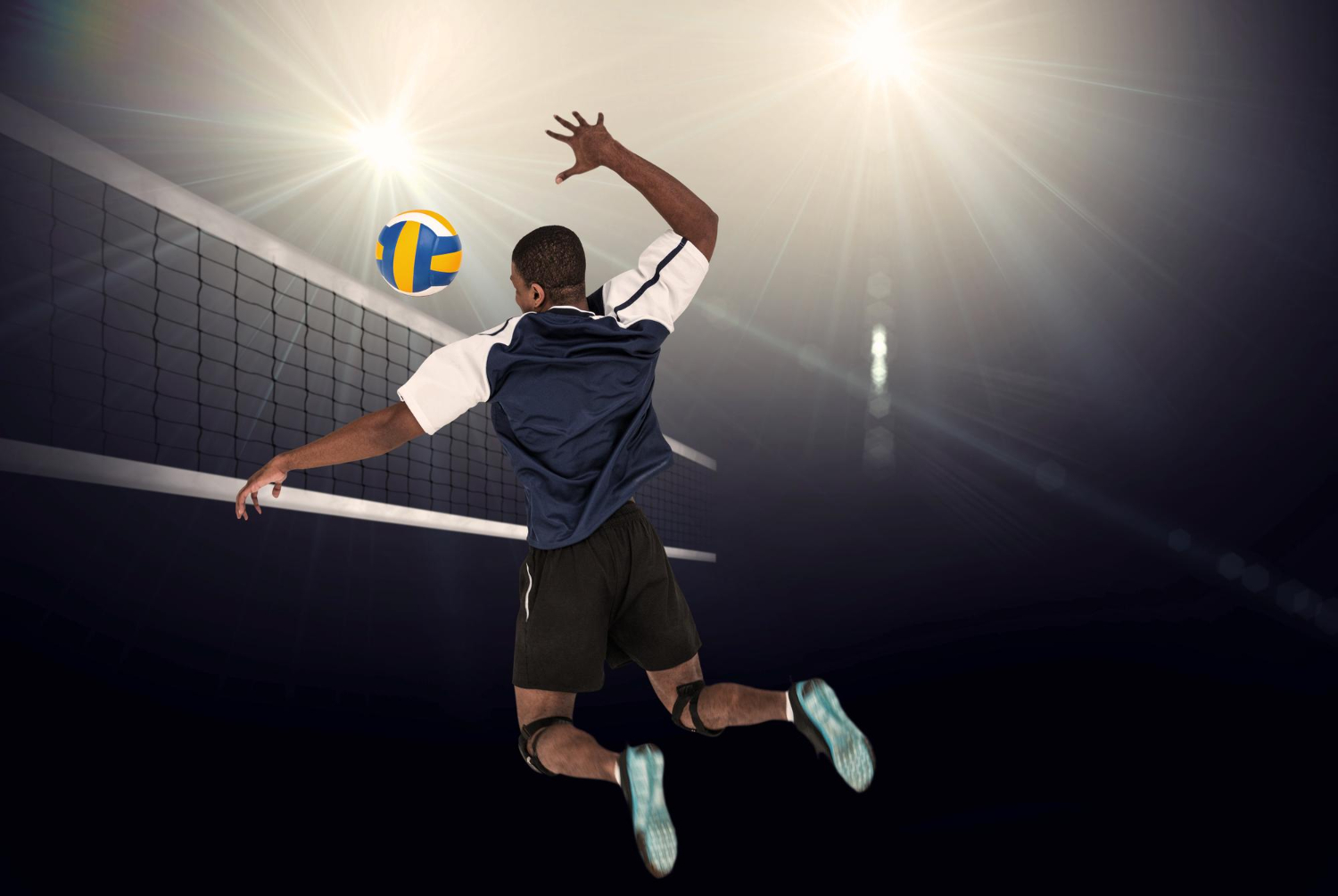Table of Contents
ToggleWhether you’re just starting out or looking to take your game to the next level, practicing the right volleyball drills can make a big difference. Drills help players build strong fundamentals, improve specific skills like passing, serving, and hitting, and develop better teamwork on the court. This power page is your go-to guide for the most effective volleyball drills for all skill levels. From warm-ups to advanced game-like exercises, each drill is designed to boost performance, confidence, and consistency in every position.
Why Volleyball Drills are Important?
Volleyball drills are like practice reps that sharpen your game one step at a time. Instead of just playing aimlessly, drills help you zoom in on specific skills, like passing, serving, or setting, so you can really get them right. And the more you repeat them, the better and faster you get.
Here’s why drills are a big deal:
- Muscle Memory: Doing the same move over and over helps it stick. Soon, your body knows exactly what to do, even in a fast, high-pressure game.
- Better Fitness: Many drills include quick footwork, jumping, and movement. So while you’re practicing skills, you’re also getting stronger, faster, and more agile.
- Teamwork: Partner drills and team-based exercises teach you how to move and talk as one unit. That chemistry is key on the court.
- Game Smarts: Some drills feel like real match situations. They help you understand where to be, how plays work, and how to adjust on the fly.
- Confidence Boost: Nailing a drill builds your confidence. And when you feel good about your skills, you play with more focus and control during real games.
Best Volleyball Drills for Every Level
Before diving into complex plays or competitive matches, it’s essential to build a strong foundation. The right drills help improve technique, build muscle memory, and boost overall game awareness. Below is a categorized collection of volleyball drills for all levels. These are perfect for daily practice, team sessions, or even solo improvement.
Important: Always begin with a proper warm-up to prepare your body and avoid injury. Don’t skip the cool-down either!
-
Volleyball Warm-Up Drills (Essential Before Every Session)
Basic volleyball drills like a proper warm-up wake up your muscles, improve flexibility, and get you mentally ready to play. Here are a few must-do warm-up activities:
-
Light Cardio & Dynamic Stretching
- Players: Team or individual
- Goal: Prepare muscles, improve flexibility, and reduce risk of injury.
- How to Do It: Perform jogging, side shuffles, arm circles, leg swings, torso twists, high knees, and butt kicks for 5–10 minutes.
- Jogging & Side Shuffles: Do 5–10 minutes of light jogging and shuffling across the court to increase blood flow.
- Arm Circles: Rotate arms forward and backward, starting small and growing larger.
- Leg Swings: Swing legs front-to-back and side-to-side to loosen hips and hamstrings.
- Torso Twists: Gently rotate from the waist to loosen your core.
- High Knees & Butt Kicks: Short bursts to activate your legs and build agility.
- Progression/Variation: Increase intensity or duration; add sport-specific movements.
- Equipment: None
-
Pepper (Basic Ball Control)
- Players: 2–3
- Goal: To warm up passing, setting, and hitting in a continuous rhythm.
- How to Do It:
- Player A starts with a self-toss and passes to Player B.
- Player B sets to themselves, then lightly spikes or bumps the ball back.
- Repeat continuously with smooth, controlled touches.
- Progression/Variation: Increase distance, add a third player, or vary passes.
- Equipment: Volleyball
-
-
Volleyball Passing Drills (Master the First Contact)
A strong pass sets the tone for the entire play. These drills focus on ball control, platform technique, and consistency, key ingredients for a reliable first touch.
-
Self-Pass & Catch
- Players: 1
- Goal: Build good form and control using your forearms.
- How to Do It: Toss the ball up to yourself, then pass it with your forearms and catch it. Repeat the motion, keeping your arms flat and using your legs for power.
- Progression/Variation: Skip the catch and continue self-passes.
- Equipment: Volleyball
Try This: As you get better, skip the catch and try doing continuous self-passes.
-
Wall Passing
- Players: 1
- Goal: Improve accuracy and quick reactions.
- How to Do It: Stand a few feet from a wall and pass the ball into it using your forearms. Aim for a clean, consistent rebound. Stay in a ready position.
- Progression/Variation: Adjust distance, use one-arm passes, or target zones.
- Equipment: Volleyball, wall
Try This: Move closer or farther from the wall. Use targets on the wall or switch to one-arm passes for more challenge.
-
Partner Passing (Stationary & Moving)
- Players: 2 or more
- Goal: Work on accuracy, communication, and footwork.
- How to Do It.
- Stationary: Stand facing your partner and pass back and forth, aiming for chest height.
- Moving: One partner stays still while the other shuffles side to side, passing the ball while moving. Then switch roles.
- Progression/Variation: Use cones for movement zones, add voice calls.
- Equipment: Volleyball, cones (optional)
Try This: Use cones to mark movement zones or add voice calls like “left” or “right” for quick thinking.
-
Target Passing (To the Setter’s Zone)
- Players: 3 or more (Passer, Setter, and a Feeder or Coach)
- Goal: Practice real-game passing to the setter’s sweet spot.
- How to Do It: A coach or teammate feeds the ball. The passer aims to send it right to the setter’s position (usually front-right or center front).
- Progression/Variation: Vary feeds (low, fast, short); add movement or serve-receive pressure.
- Equipment: Volleyball
Try This: Mix up the feeds, low, high, short, or fast. Add serve-receive pressure or movement before the pass to mimic real match situations.
-
Want to become a passing pro? Discover more drills and expert tips in our full blog Volleyball Passing Drills.
-
Volleyball Setting Drills (Soft Hands, Sharp Timing)
Setting is all about control, precision, and timing. These drills help players develop soft hands, faster reactions, and better coordination with hitters. Whether you’re practicing solo or with a team, these setting drills build the foundation for a strong offense.
-
Self-Setting (Fingerpad Control)
- Players: 1
- Goal: Improve ball feel and finger control.
- How to Do It: Toss the ball above your head and set it straight up using just your fingertips, not your palms. Try to keep it centered and soft.
- Progression/Variation: Raise height, continuous reps, walk while setting.
- Equipment: Volleyball
Try This: Raise the height of the set, try continuous reps, or set while slowly walking forward/backward.
-
Wall Setting
- Players: 1
- Goal: Practice quick hands and release timing.
- How to Do It: Stand a few feet from a wall and set the ball against it. Focus on speed, accuracy, and consistency.
- Progression/Variation: Aim for a wall target or count consecutive sets.
- Equipment: Volleyball, wall
Try This: Aim for a target spot on the wall or count how many sets you can hit in a row without dropping.
-
Partner Setting (Overhead & Back Sets)
- Players: 2
- Goal: Improve control and decision-making.
- How to Do It: Stand facing a partner and set the ball back and forth.
- Overhead Sets: Push the ball using your fingers with a clean follow-through.
- Back Sets: Practice setting the ball behind you.
- Progression/Variation: Add distance, movement, or partner call-outs.
- Equipment: Volleyball
Try This: Add movement, increase the distance, or have your partner call “front” or “back” before each pass.
-
Setter-Hitter Connection (Live Setting)
- Players: 3+ (Setter, Hitter, Feeder)
- Goal: Build timing and game-like rhythm.
- How to Do It: A feeder sends the ball to the setter, who sets it up for the hitter to spike.
- Progression/Variation: Add blockers, vary set types (quick, high).
- Equipment: Volleyball, net
Try This: Use imperfect passes, add variety (quick sets, high balls), or place a blocker on the other side to simulate pressure.
-
-
Volleyball Hitting Drills (The Attack)
Hitting is where power meets precision. It’s not just about swinging hard, it’s about timing, footwork, shot selection, and control. These drills help players sharpen every part of their attack game, from the first step of the approach to the final wrist snap.
-
Approach and Arm Swing (Without Ball)
- Players: 1
- Goal: Perfect your movement mechanics.
- How to Do It: Practice your full hitting approach (3 or 4 steps) with a strong jump and a controlled arm swing. No ball needed, focus on form, speed, and rhythm.
- Progression/Variation: Practice from different net positions.
- Equipment: None
Try This: Run the drill from different net positions, outside, middle, and right side.
-
Hitting Off a Box/Stand
- Players: 1+ (Hitter, Feeder)
- Goal: Improve arm swing and contact point.
- How to Do It: Stand on a box or platform near the net. A partner tosses the ball, and you hit it over the net into the target zones. Focus on a high contact point and solid wrist snap.
- Progression/Variation: Vary toss speed and feeder position.
- Equipment: Volleyball, box/stand, net
Try This: Increase toss speed or move the feeder to different spots to challenge your adjustments.
-
Live Hitting (Approach, Set, Hit)
- Players: 3+ (Feeder, Setter, Hitter)
- Goal: Build timing and consistency in a game-like rhythm.
- How to Do It: A ball is fed to the setter, who sets up the hitter. Focus on syncing your approach with the set and aiming for smart placement.
- Progression/Variation: Add blockers, alternate cross-court and line hits.
- Equipment: Volleyball, net
Try This: Add blockers or defenders to simulate pressure, and alternate between cross-court and line shots.
-
-
Volleyball Serving Drills (The First Attack)
A strong and strategic serve is often your first opportunity to score or disrupt your opponent’s formation. These serving drills focus on enhancing accuracy, quick transitions, and performing under pressure.
-
Target Serving
- Players: 1 or more
- Goal: Improve serving accuracy and zone targeting
- How to Do It:
- Place cones or markers on specific zones of the opposing court.
- Each player serves, aiming to hit the designated target area.
- Progression/Variation: Use float, topspin, jump serves; hit consecutive targets.
- Equipment: Volleyball, cones/markers
-
Serve & Move
- Players: 1 or more
- Goal: Build the habit of transitioning from a serve to defense quickly
- How to Do It:
- Player serves the ball
- Immediately sprints to a defensive spot on their side of the court
- Progression/Variation: Add a quick defensive action, such as digging a coach-thrown ball
- Equipment: Volleyball
-
Serving Under Pressure (Competition Drill)
- Players: Full team
- Goal: Simulate game-like pressure situations for serving
- How to Do it:
- Split the team into two groups
- Each player serves, scoring points for aces or in-zone serves
- Mistakes (e.g., net serves or out balls) have consequences like push-ups
- Progression/Variation: Increase quotas, add zone-specific scoring.
- Equipment: Volleyball, net
-
-
Volleyball Blocking Drills: Mastering the Net Defense
Blocking is one of the most effective ways to shut down an opponent’s attack and turn defense into instant offense. Here are three progressive blocking drills to build strong net defense skills.
-
-
Shadow Blocking (Footwork & Jump)
- Players: 1
- Goal: Improve blocking footwork and jump technique
- How to Do It:
- Move laterally along the net using a shuffle step
- Swing your arms up and jump vertically as if blocking a spike
- Focus on speed, explosiveness, and fully extending your hands over the net
- Progression/Variation: Simulate hitter approaches, practice different zones (middle, outside, right).
- Equipment: Net
-
Mirror Blocking
- Players: 2
- Goal: Build timing and coordination with a partner
- How to Do It:
- Stand on opposite sides of the net
- One player mimics an attack approach, while the other mirrors the movement with a block
- Emphasize proper hand positioning and synchronized jumps
- Progression/Variation: Add a soft ball toss or light spike over the net. Also, switch roles to develop both attacking and blocking rhythm.
- Equipment: Volleyball, net
-
Live Blocking (Against Hitter)
- Players: 3+ (Feeder, Hitter, Blocker)
- Goal: Apply blocking skills in a game-like situation
- How to Do It:
- Feeder sets the ball to the hitter
- The blocker reads the hitter’s movement, times the jump, and attempts a block
- Key focus: anticipate the attack, penetrate the net, and close the block
- Progression/Variation: Add a second or third blocker for double/triple block scenarios, vary the hitter’s angle, approach, and attack speed
- Equipment: Volleyball, net
-
Tip: Great blockers don’t just jump, they read the play, communicate with teammates, and dominate the net with precision and timing.
-
-
Volleyball Defense Drills / Digging (The Last Line of Defense)
Saving the ball and turning defense into offense is one of the most crucial skills in volleyball. Strong defensive drills help players anticipate, move efficiently, and dig tough shots to keep rallies alive. Let’s look at some effective defensive drills to build digging prowess.
-
Shuffle and Dig
- Players: 1+ (Defender and Feeder)
- Goal: Enhance defensive footwork and digging accuracy.
- How to Do It: A feeder sends balls to different areas of the court. The defender shuffles side-to-side, adjusting quickly to each hit, and performs a dig with control and precision.
- Progression/Variation: Increase the pace and unpredictability of the hits. As players improve, introduce diving or sprawling to challenge their reaction time and technique.
- Equipment: Volleyball
-
Pepper Defense (Game-like Scramble)
- Players: 3–4
- Goal: Prepare for chaotic and fast-paced defensive situations.
- How to Do It: Players continuously hit and dig the ball to one another, simulating tough in-game rallies. The focus is on digging challenging shots and preventing the ball from hitting the ground. Constant movement and quick reflexes are essential.
- Progression/Variation: Apply a “no-set” rule: players must dig and return the ball over the net without setting. This sharpens digging under pressure and encourages creative defensive responses.
- Equipment: Volleyball
-
Court Coverage (Wash Drill)
- Players: Full team
- Goal: Build team defensive cohesion, coverage, and communication.
- How to Do It: Divide the court into zones. A coach or feeder attacks balls into various zones, and the defense must rotate, cover their areas, and dig the ball cleanly. The aim is to transition smoothly from defense to offense.
- Progression/Variation: Add offensive plays from the opposing side to simulate game conditions. Focus on immediate communication and quick transitions to attack after a dig.
- Equipment: Volleyball, cones (optional)
-
-
Volleyball Conditioning Drills (Beyond the Ball)
Physical fitness is the foundation for consistent, high-level volleyball performance. These conditioning drills improve speed, power, endurance, and overall athleticism, essential for dominating long matches and staying injury-free.
-
Plyometric Jumps
- Players: Individual or team
- Goal: Boost vertical leap and explosive power.
- How to Do It:
Perform jumping exercises such as:- Box Jumps: A plyometric exercise where you jump vertically from the ground onto an elevated surface or box.
- Broad Jumps: A horizontal jumping exercise performed from a standing start, focusing on jumping as far forward as possible.
- Hurdle Hops: A continuous series of jumps over multiple low hurdles or obstacles, emphasizing quick ground contact and rhythm.
Emphasize rapid ground contact and maximum height during each repetition.
- Progression/Variation: Increase reps, vary jump height.
- Equipment: Plyometric boxes, hurdles.
-
Agility Ladder Drills
- Players: Individual or team
- Goal: Improve foot speed, coordination, and agility.
- How to Do It:
Navigate an agility ladder using various patterns like:- Icky Shuffle
- Two-In Two-Out
- Lateral Quick Steps
Focus on speed and precision with each movement.
- Progression/Variation: Increase speed and complexity.
- Equipment: Agility ladder.
-
Lateral Shuffles with Resistance Bands
- Players: Individual or team
- Goal: Strengthen lateral quickness and build defensive agility.
- How to Do It: Wrap a resistance band around the ankles or knees. Perform lateral shuffle steps while maintaining tension in the band to activate glutes and stabilizers.
- Progression/Variation: Increase shuffle distance or band resistance.
- Equipment: Resistance bands.
-
Interval Sprints
- Players: Individual or team
- Goal: Develop anaerobic endurance for fast-paced play.
- How to Do It:
Execute short bursts of sprinting followed by brief rest periods. Example:- 20 seconds sprint / 40 seconds rest
- Sprint to various court zones marked by cones
- Progression/Variation: Reduce rest or increase sprint distance.
- Equipment: Cones or court lines.
-
-
Cool-Down Drills (Post-Practice Recovery)
A proper cool-down is essential for recovery, flexibility, and injury prevention. It helps your body transition from high-intensity activity to a resting state.
-
Light Cardio (5–10 minutes)
- Players: Individual or team
- Goal: Lower heart rate and improve recovery.
- How to Do It: Walk or jog lightly for 5–10 minutes.
- Walking: A moderate-paced walk lowers your heart rate and improves blood flow, aiding recovery.
- Light Jogging: If the session was intense, start with a slow jog before transitioning to walking.
- Progression/Variation: Start with jog, end with walk.
- Equipment: None
Tips: “A 5–10 minute walk can reduce muscle soreness and help prevent stiffness.” — Mayo Clinic
-
Static Stretching (20–30 seconds per stretch)
- Players: Individual
- Goal: Improve flexibility and prevent stiffness.
- How to Do It: Hold quad, hamstring, calf, shoulder, and triceps stretches for 20–30s.
- Quadriceps Stretch: Stand and grab your foot, pulling your heel toward your glutes to stretch the front of your thigh.
- Hamstring Stretch: Sit with legs extended and reach toward your toes to stretch the back of your legs.
- Calf Stretch: Face a wall with one foot slightly behind. Lean forward to feel the stretch in your calf.
- Shoulder Stretch: Bring one arm across your chest. Use the other arm to gently pull it closer to feel the stretch in your shoulder.
- Triceps Stretch: Raise one arm overhead and bend the elbow. Use your opposite hand to gently press the elbow for a stretch in the back of your upper arm.
- Progression/Variation: Add more stretches or increase hold time.
- Equipment: None
-
Volleyball Drills by Skill Level
Effective volleyball training should be tailored to a player’s skill level and experience. Whether trying volleyball drills for middle school, beginners or advanced high school players, choosing age-appropriate drills helps build solid fundamentals and game confidence.
Here’s a practical table to guide your drill selection based on player age and experience:
| Drill Category | Middle School (Beginner/Intermediate) | High School (Intermediate/Advanced) |
|---|---|---|
| Passing | Partner Passing, Wall Passing, Forearm Passing to Target | Pepper Drill, Butterfly Passing, Serve Receive Simulation, Digging Drills |
| Setting | Wall Setting, Partner Setting (Static), Target Setting (easy) | Partner Setting (Moving), Quick Set Drills, Setter Attack Drills |
| Attacking | Approach & Arm Swing (no ball), Spike Line (easy toss), Toss & Hit | Spike Line (aggressive toss), Target Hitting, Block-Out Hitting |
| Serving | Underhand Serve Practice, Overhand Serve Targets (close) | Overhand Serve Targets (various), Jump Serve Reps, Serve Receive Defense |
| Blocking | Footwork & Hand Position (Wall), Penetration Blocking (simplified) | Read Blocking, Transition Blocking, Double Blocking |
| Defense/Digging | Forearm Digging (coach toss), Scramble Digging (slow), Pancake Drill | Scramble Digging (fast), Dive & Roll Practice, Reaction Digging |
| Team/Game-Like | 3v3 or 4v4 (modified rules), Serve & Serve Receive (basic) | 6v6 Scrimmage, Freeball/Downball Transition, Queen of the Court |
Tailoring volleyball drills to match your players’ skill levels ensures steady development, confidence building, and better on-court performance. Whether working with middle school beginners or advanced high school athletes, using level-appropriate drills helps reinforce fundamentals while gradually introducing more complex techniques. Keep practice sessions engaging, progressive, and aligned with your team’s needs for maximum improvement.
Want to improve your volleyball skills faster? Practice the right drills with expert guidance—join our Volleyball Programs today!
FAQs
1. What are the best volleyball drills for beginners?
Beginner-friendly drills include basic passing and catching, simple setting exercises, and practicing underhand serves. These help young players get comfortable with the ball and learn essential movements.
2. How often should volleyball drills be practiced?
Drills should ideally be done 3 to 5 times per week, depending on experience and the time of year. Regular practice-rather than long, intense sessions-leads to better skill development over time.
3. How long should each drill last?
Aim for 5 to 15 minutes per drill, with short breaks in between. Mixing up the activities helps keep players focused and motivated.
4. Can I do volleyball drills alone?
Absolutely. You can work on setting against a wall, self-tossing for control, or doing agility drills on your own. A rebounder or ball machine can also add variety to solo practice.
5. Are volleyball drills different for indoor and beach volleyball?
Yes, though the basics are similar, beach volleyball drills place more emphasis on endurance, sand movement, and teamwork between two players.
6. How do you make volleyball drills fun for kids?
Add fun elements like upbeat music, friendly competitions, and creative games-such as target hitting or relay-style drills- to keep young players excited and involved.
7. Can I modify these drills for youth players under 10?
Definitely. Use lighter balls, simplify the movements, and focus on playful engagement rather than perfect technique. The goal is to keep it active and enjoyable.
Authors
-
Sarah Baker is a dedicated sports and fitness content specialist with a rich background in athletics. As a former high school volleyball player and track athlete, she understands the transformative power of sports in shaping character and fostering discipline. Sarah is passionate about inspiring youth worldwide to embrace sports, hone their skills, and achieve excellence both on and off the court. She continually expands her knowledge through ongoing education in sports performance and fitness, aiming to empower her audience with valuable insights. Currently, Sarah contributes her expertise to the content team at Valley Athletics, a premier sports facility in Fresno, California, dedicated to developing young athletes in volleyball, basketball, and pickleball.
View all posts -

Jonathan stands as a monumental figure in volleyball, boasting accolades such as National Champion, National Player of the Year, and being one of the select few, just thirteen, to achieve All-American status four times in NCAA volleyball history. His illustrious playing journey took flight at Pepperdine University, culminating in his 2005 NCAA Championship win, AVCA National Player of the Year and Newcomer of the Year titles.
View all posts



